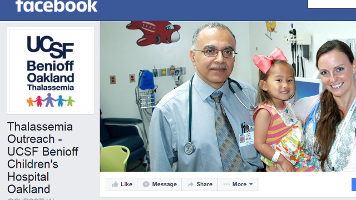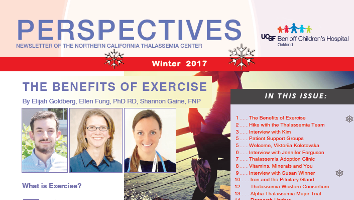IRON OVERLOAD AND CHELATION THERAPY
Treatment with deferoxamine (Desferal)
Deferoxamine (Desferal, DFO) is the most studied iron chelator. It has an excellent safety and efficacy profile and has shown a dramatic effect on increasing survival rates and decreasing morbidity.
Deferoxamine has a poor oral bioavailability. It is administered subcutaneously, intravenously, or occasionally intramuscularly. It has a short half-life, necessitating administration at least eight to twelve hours daily, five to seven days per week. Generally, iron is removed much more efficiently when deferoxamine is infused over a longer period of time. It also can be given intravenously 24 hours per day when indicated. The primary—if not the only—reason deferoxamine is ineffective in some patients is poor compliance.
Deferoxamine is effective in chelating non-transferrin bound iron and can reverse cardiac arrhythmias and left-ventricular dysfunction, although, combination chelation therapy is usually recommended for patients with cardiac dysfunction.
The dosing of deferoxamine depends upon the weight of the patient, the degree of iron overload, and the presence of iron-related cardiotoxicity. Side effects of deferoxamine and chelators in general are greater in patients with limited iron stores and in children under two to three years of age. For this reason, deferoxamine treatment is usually withheld until after two years of age.
Ascorbic acid (vitamin C) increases the excretion of iron in the presence of deferoxamine. It is started after the initial month of deferoxamine therapy. It is given orally in the dose of 2 to 4 mg/kg per day (100 to 250 mg) and taken soon after the deferoxamine infusion has been initiated. Patients should be cautioned against excessive ascorbate intake when deferoxamine is not being infused. Ascorbate releases iron and has been associated with increased cardiac damage when taken in the absence of an iron chelator.
Subcutaneous deferoxamine should be administered at 30 to 60 mg/kg for eight to fifteen hours, five to seven days or nights per week. Deferoxamine should run over a minimum of six hours (or longer) at a maximum of 15 mg/kg per hour.
High doses of deferoxamine—more than 4 to 6 grams over 24 hours—should not be given. Increasing the dose beyond this point can cause deferoxamine toxicity. Overall survival is related to the number of hours per week that deferoxamine is infused. Deferoxamine is more effective when a lower dose is circulated through the body over a longer period of time than when a higher dose is circulated over a short period of time. Therefore, time of exposure is more important than total dose once doses of 60 mg/kg per day are being utilized.
Starting at a lower number of days per week and advancing to five to seven may help the family adapt to and accept the new therapy. Treatment seven days a week should be the goal.
A small-gauge needle in the thigh or abdomen is usually used. It is important that the needle be long enough to go through the dermis. Intradermal infusion is painful and results in blisters, swelling, and reactions. The sites should be rotated to prevent reaction and fat necrosis. (Also see Section 7.6, regarding treatment suggestions for local reactions.)
Additional intravenous deferoxamine can be given during each transfusion. However, its efficacy is limited, and toxicity is significant when given over a short period of time. By itself, this mode of administration is inadequate for control of iron overload, and additional daily dosing as described above is always necessary.
Deferoxamine at 60 mg/kg per day, 24 hours per day, 7 days per week, may be indicated with patients with severe hemosiderosis and vital organ dysfunction. Patients with a T2* less than 10 ms or a liver iron greater than 30 mg/g dry weight are candidates for this therapy. If the patient has cardiac arrhythmia or left-ventricular dysfunction, this therapy is mandatory and must be emergently started. Deferoxamine can be administered intravenously using a central line. The intravenous therapeutic dose is 60 mg/kg per day. In such high risk patients, combination therapy with deferiprone—or alternatively, deferasirox—should be utilized. If the patient has symptomatic cardiac disease due to iron, a cardiologist with special expertise in cardiac iron overload should be consulted. Certain standard cardiac treatments recommended by cardiologists unfamiliar with iron overload can be deleterious to a patient in heart failure due to iron overload.














